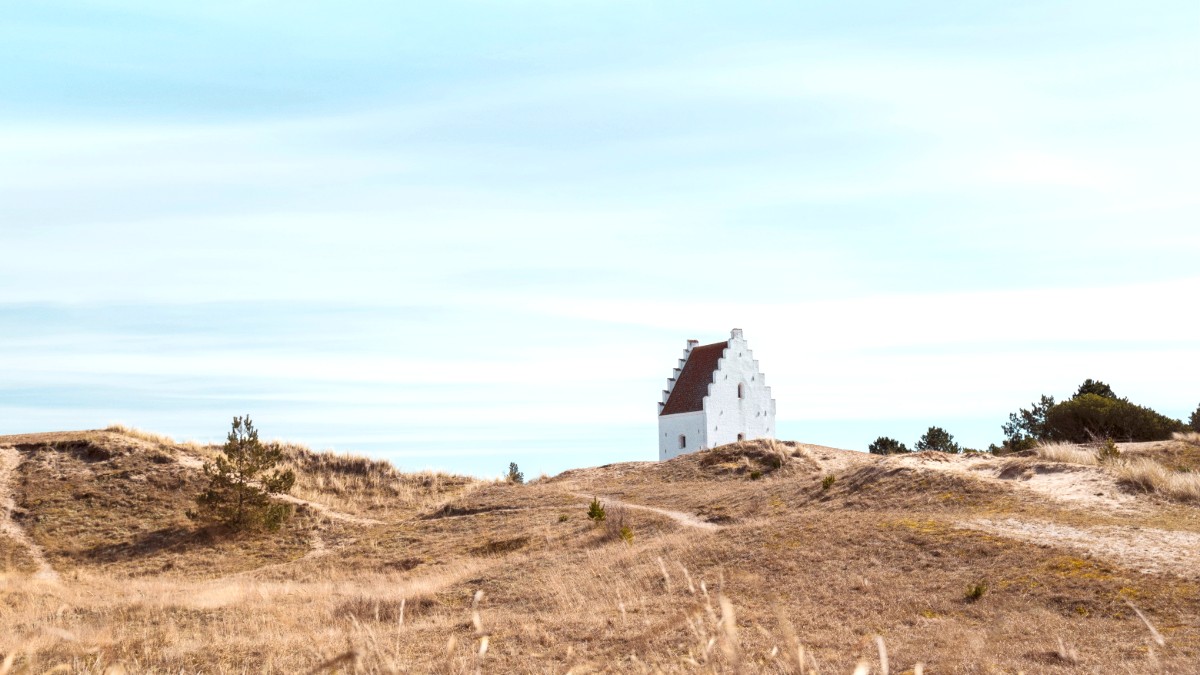
Jutland, Denmark
It is a destination where dramatic natural phenomena coexist with a rich artistic legacy and a lively fishing culture. The air here carries the scent of salt and pine, and the sound of gulls is a constant companion. Whether seeking windswept beaches, world-class art, or a peaceful escape, Skagen welcomes visitors with its unique character and unforgettable scenery. This guide unveils the secrets of Skagen, making your trip rewarding and enjoyable.
Skagen's history is deeply intertwined with the sea, initially as a fishing port. Its roots stretch back to the Middle Ages, with fishing forming the backbone of the community for centuries. The town developed as a small, isolated settlement, its inhabitants adapting to the harsh coastal conditions. The natural harbor offered shelter, and abundant fish stocks supported the local economy.
The town's fame grew significantly in the late 19th and early 20th centuries, when its extraordinary natural light and landscapes drew a celebrated artists' colony known as the Skagen Painters. They captured the town's raw beauty and human spirit, transforming Skagen into a significant cultural hub. This artistic legacy continues to shape Skagen's identity, drawing visitors interested in art history and the enduring power of nature as a muse.
Skagen's iconic yellow houses, often adorned with white trim, create a picturesque streetscape unique to the town, a direct legacy of its architectural history and the specific challenges of building in a sandy, windy environment. The harbor remains a busy hub for fishing boats and pleasure craft, forming a focal point for dining and social life. Fresh seafood arrives daily, fueling the local restaurants and fishmongers.
Skagen draws many visitors, especially during the summer, eager to experience its unique light, wide sandy beaches, and the natural spectacle at Grenen. This influx of tourism shapes the town, creating a lively atmosphere with diverse shops, galleries, and eateries, yet it retains its authentic charm.
Around 7,571 residents (as of 2023). This number swells considerably during peak tourist season.
Tourism forms a large part of the local economy. Diverse port activities contribute to the economic base.
Grenen, Skagen Museum, Den Tilsandede Kirke (The Buried Church), Skagen Lighthouse (Det Grå Fyr).
The meeting of the two seas at Grenen, the unique quality of the Skagen light, and the lasting legacy of the Skagen Painters.
Distinctive yellow houses with red-tiled roofs characterize the townscape.
These elements combine to make Skagen a truly distinctive place in Denmark, attracting visitors globally for its natural wonder, historical insight, and artistic appreciation.
The unique quality of the Skagen light, renowned for its clarity and soft tones, captivated artists for centuries and continues to inspire.
The meeting of the two seas at Grenen is a natural phenomenon that draws visitors from around the world to witness the clashing currents.
Skagen's resilience, from its early struggles with sand drift (as evidenced by Den Tilsandede Kirke) to its wartime role and artistic flourishing, speaks to its enduring spirit.
Skagen experiences a temperate maritime climate, characterized by mild summers, cool winters, and moderate precipitation throughout the year. Wind is a constant companion due to the town's exposed coastal location.
Skagen is part of the Schengen Area, impacting visa needs. Denmark's cost of living is relatively high; budgeting advice aids in managing expenses. Safety awareness and health preparations contribute to a worry-free journey.
June-August: Warmest weather, longest daylight hours. Best for beach activities and outdoor exploration.
April-May, September-October: Fewer crowds, pleasant temperatures for sightseeing, unique light for photography.
November-March: Lowest prices, very few tourists, quiet atmosphere, unique winter landscapes. Many businesses operate on reduced schedules.
Denmark is part of the Schengen Area, a group of 27 European countries with no passport or border control at their mutual borders.